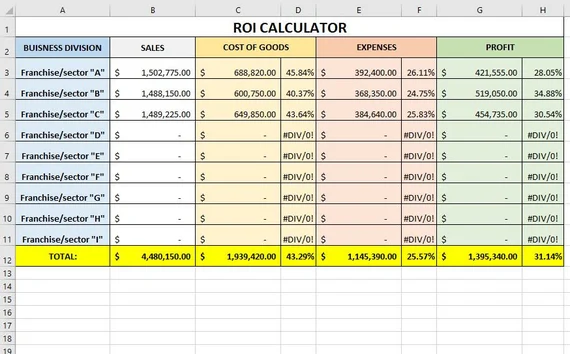Setting up a VPS server in Germany can be a strategic move for businesses, developers, and anyone looking to optimize their online presence in Europe. Germany is known for its robust data infrastructure, strong privacy laws, and central location within Europe, making it an ideal place to host your virtual private server (VPS). If you’re a beginner germany vps hosting, the process might seem daunting at first, but this step-by-step guide will walk you through setting up your VPS server in Germany with ease.
What is a VPS Server Germany?
Before diving into the setup, it’s important to understand what a VPS server is and why choosing Germany as the location matters. A VPS, or Virtual Private Server, is a virtualized server that mimics a dedicated server environment within a shared hosting setup. It offers more control, better performance, and enhanced security compared to shared hosting.
Opting for a VPS server in Germany means your data and website will be hosted on servers physically located in Germany. This choice benefits users targeting European markets with faster load times, compliance with European data protection regulations such as GDPR, and increased reliability thanks to Germany’s advanced technological infrastructure.
Why Choose a VPS Server in Germany?
- Data Privacy and Compliance: Germany has stringent data protection laws, making it an excellent choice for businesses concerned with privacy and legal compliance.
- Improved Speed and Performance: Hosting your VPS closer to your primary audience reduces latency, resulting in faster website loading times.
- Reliability: German data centers are known for their high standards of security, uptime, and infrastructure.
- Central Location: Germany’s geographic position within Europe allows efficient access for users from multiple countries.
Now that you understand the benefits, let’s move on to how to set up your VPS server in Germany.
Step 1: Choose the Right VPS Provider with German Servers
The first step in setting up your VPS server Germany is selecting a hosting provider that offers servers physically located in Germany. Some popular providers with German data centers include Hetzner, Contabo, and IONOS.
When choosing a VPS provider, consider the following:
- Server location: Confirm the provider has data centers in Germany.
- Resources: Ensure the VPS plan includes enough CPU, RAM, and storage for your needs.
- Operating System options: Check if they support your preferred OS (Linux, Windows, etc.).
- Customer support: Look for responsive customer service, especially if you are a beginner.
- Pricing: Compare plans to find one that fits your budget without sacrificing quality.
Once you pick your provider, proceed to sign up for the VPS plan.
Step 2: Register and Purchase Your VPS Plan
After choosing a VPS provider, create an account on their platform. Most providers require basic personal information and payment details. During registration, select a VPS plan that meets your requirements in terms of CPU, RAM, storage, and bandwidth.
Make sure to select the German data center location during the configuration process. This ensures your VPS will be hosted on a server in Germany.
Payment methods vary but commonly include credit/debit cards, PayPal, or bank transfers. Once the payment is processed, your VPS server Germany will be provisioned.
Step 3: Access Your VPS via SSH or Remote Desktop
Once your VPS is ready, you will receive access credentials via email. These typically include the IP address, username (usually root or administrator), and password.
For Linux VPS:
- Use an SSH client like PuTTY (Windows) or Terminal (Mac/Linux) to connect.
- Command:
ssh root@your_vps_ip - Enter your password when prompted.
For Windows VPS:
- Use the Remote Desktop Connection tool.
- Input the VPS IP address, username, and password to log in.
Ensure you keep these credentials secure as they provide full access to your VPS.
Step 4: Update Your VPS Operating System
Immediately after logging into your VPS server Germany, update the operating system to ensure all software is current and secure.
For Ubuntu/Debian:
- Run:
sudo apt update && sudo apt upgrade -y
For CentOS:
- Run:
sudo yum update -y
For Windows servers, use Windows Update through the settings menu.
Updating keeps your VPS protected from vulnerabilities and improves overall stability.
Step 5: Secure Your VPS Server
Security is paramount when managing your VPS server Germany. Take the following steps to safeguard your server:
- Change the default SSH port: This helps prevent automated attacks on port 22.
- Disable root login via SSH: Create a new user with sudo privileges.
- Set up a firewall: Use tools like UFW (Ubuntu) or firewalld (CentOS) to restrict incoming traffic.
- Install Fail2Ban: Protects against brute-force login attempts.
- Enable automatic security updates: Where available, configure your server to automatically install critical security patches.
By securing your VPS early, you reduce the risk of unauthorized access and potential damage.
Step 6: Install Necessary Software and Configure Your VPS
Depending on your purpose, install the necessary software packages on your VPS server Germany. Common uses include hosting websites, running applications, or using the VPS as a database server.
For example, to host a website, you may install:
- Web server software such as Apache or Nginx
- Database servers like MySQL or PostgreSQL
- Programming language runtimes such as PHP, Python, or Node.js
You can install these using your server’s package manager. For example, to install Apache and PHP on Ubuntu:
bashCopyEditsudo apt install apache2 php libapache2-mod-php -y
After installation, configure the software according to your project requirements. Make sure to test your setup by accessing your VPS IP address through a web browser or running your application.
Step 7: Set Up Domain and SSL Certificate (Optional but Recommended)
If you have a domain name, you can point it to your VPS server Germany’s IP address. Update the DNS records with your domain registrar:
- Create an A record pointing to your VPS IP.
- Optionally, configure additional records like CNAME or MX as needed.
Next, secure your website with an SSL certificate to enable HTTPS:
- Use free certificates from Let’s Encrypt.
- Install Certbot on your VPS and run:
bashCopyEditsudo certbot --apache
(For Apache servers, adjust for Nginx if needed.)
SSL encryption protects your users’ data and improves SEO rankings.
Step 8: Monitor and Maintain Your VPS
After setup, continuous monitoring and maintenance are essential to keep your VPS server Germany running smoothly:
- Monitor server performance: Use tools like htop, Netdata, or your provider’s dashboard.
- Backup regularly: Schedule automated backups of your VPS data.
- Update software: Keep your OS and installed applications up to date.
- Check security logs: Review authentication logs to detect suspicious activity.
- Scale resources as needed: Upgrade your VPS plan if traffic or resource usage grows.
Proper maintenance ensures reliability and optimal performance.
Conclusion
Setting up a VPS server Germany is a practical solution for users looking to host websites or applications with high performance and strong privacy protections. By choosing the right VPS provider, securing your server, installing necessary software, and maintaining your VPS, even beginners can establish a reliable online presence in Germany.



